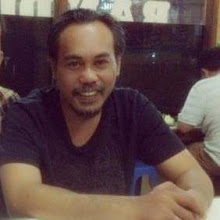East Java
Posted by: Uong Jowo Posted date: 6/02/2011 / comment : 0
According to the 2000 census, East Java has 34 million inhabitants, estimated to increase to 37.4 million in 2010, making it the second most populous Indonesian province after West Java. The inhabitants are predominantly ethnically Javanese.
Native minorities include migrants from nearby Madura, and distinct Javanese ethnicities such as the Tengger people in Bromo, the Samin and the Osing people in Banyuwangi. East Java also hosts a significant population of other ethnic groups, such as Chinese, Indians, and Arabs. In addition to the national language, Indonesian, they also speak Javanese. Javanese as spoken in the western East Java is a similar dialect to the one spoken in nearby Central Java, with its hierarchy of high, medium, and low registers. In the eastern cities of Surabaya, Malang, and surrounding areas, a more egalitarian version of Javanese is spoken, with less regard for hierarchy and a richer vocabulary for vulgarity.
Madurese is spoken by around 15 million ethnic Madurese, and is concentrated in Madura Island, Kangean Islands, Masalembu Islands, eastern East Java, and East Java's larger cities.
Religion
Hinduism and Buddhism once dominated the island, however, with the arrival of Islam, Hinduism was gradually pushed out in the 14th and 15th century (see the spread of Islam in Indonesia). The last nobles and loyalists of the fallen empire of Majapahit fled from this point to Bali. Islam spread from northern cities in Java where traders from Gujarat, India brought with them Islam. The eastern part of East Java, from Surabaya to Pasuruan, and the cities along the coast, and back to Banyuwangi to Jember, is known as the "horseshoe area" in context with earlier Muslim communities living there.
Native minorities include migrants from nearby Madura, and distinct Javanese ethnicities such as the Tengger people in Bromo, the Samin and the Osing people in Banyuwangi. East Java also hosts a significant population of other ethnic groups, such as Chinese, Indians, and Arabs. In addition to the national language, Indonesian, they also speak Javanese. Javanese as spoken in the western East Java is a similar dialect to the one spoken in nearby Central Java, with its hierarchy of high, medium, and low registers. In the eastern cities of Surabaya, Malang, and surrounding areas, a more egalitarian version of Javanese is spoken, with less regard for hierarchy and a richer vocabulary for vulgarity.
Madurese is spoken by around 15 million ethnic Madurese, and is concentrated in Madura Island, Kangean Islands, Masalembu Islands, eastern East Java, and East Java's larger cities.
Religion
Hinduism and Buddhism once dominated the island, however, with the arrival of Islam, Hinduism was gradually pushed out in the 14th and 15th century (see the spread of Islam in Indonesia). The last nobles and loyalists of the fallen empire of Majapahit fled from this point to Bali. Islam spread from northern cities in Java where traders from Gujarat, India brought with them Islam. The eastern part of East Java, from Surabaya to Pasuruan, and the cities along the coast, and back to Banyuwangi to Jember, is known as the "horseshoe area" in context with earlier Muslim communities living there.
About Uong Jowo
This is a short description in the author block about the author. You edit it by entering text in the "Biographical Info" field in the user admin panel.
Subscribe to:
Post Comments (Atom)
Latest
Comments
About Me

- Uong Jowo
- Uong Jowo was Born In Surabaya, March 1971. I'm A Blogger Templates Designer and a Converter Wp Themes to Blogger Template.







No comments: